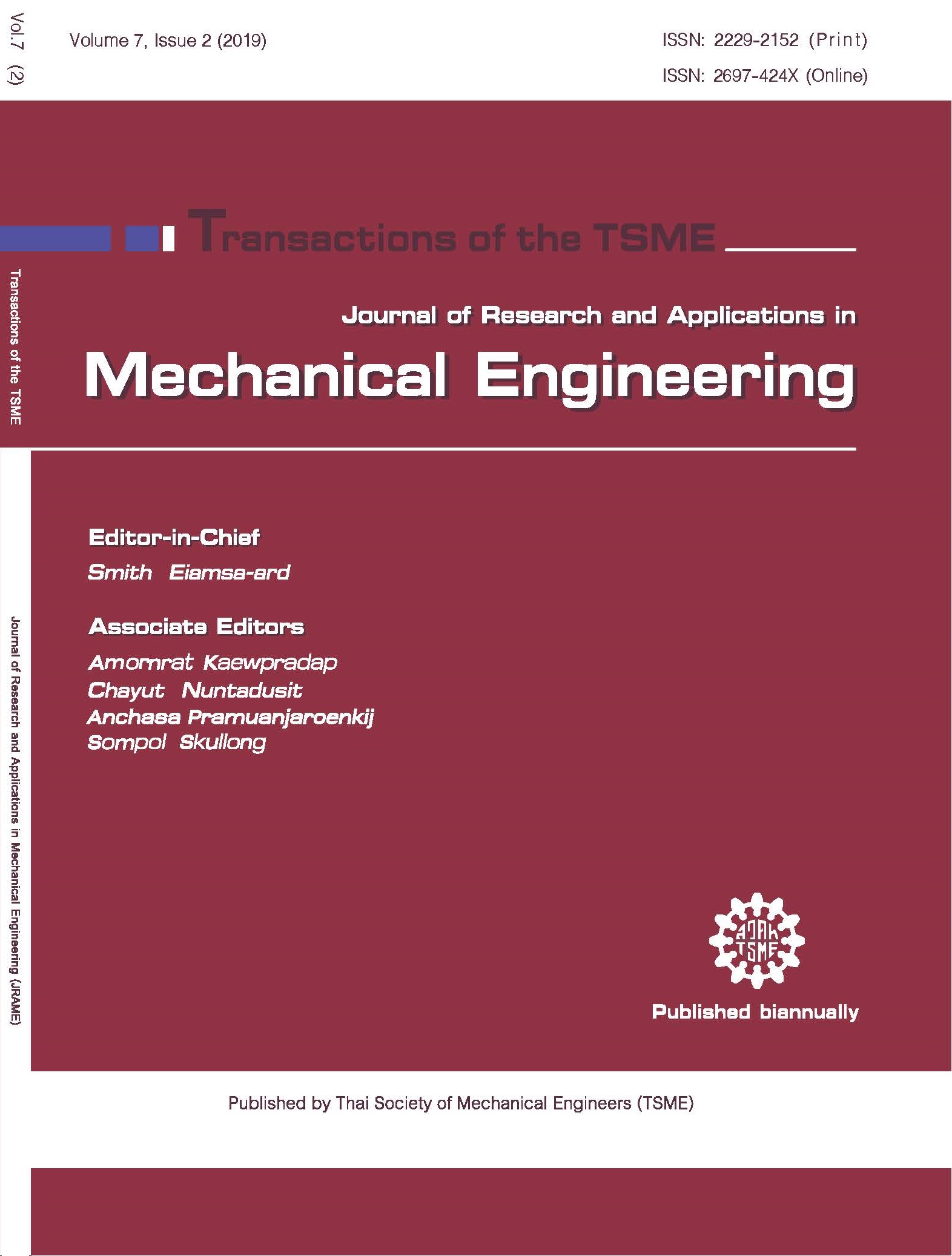Prototyping and control of a 2-dof serial flexible-joint robot by using fuzzy control system
Main Article Content
Abstract
Challenging in control of a flexible-joint robot is residual vibration due to non-linearity and flexibility of a joint. Furthermore, in a 2-DOF serial flexible-joint robot, there is interaction of Link-1 control and Link-2 control. In this research, the prototype flexible-joint robot was designed and tested. The flexible-joints have springs and flexible couplings. Conventional PID controller, which is widely used in industry, can be used in the robot with limited performance. Two PID controllers separately control the Link-1 and Link-2 link position. From the experiment tests, there is high interaction between each link. Control action of the Link-2 link affects higher residual vibration of the Link-1. Fuzzy controller was designed as a parallel compensator to reduce the oscillation. The movements of the Link-2 link are used as the fuzzy inputs. The controller generates the control input of the Link-1 that cancels the residual vibration of the Link-1. The proposed controller showed superior performance of position tracking and less vibration compared to the PID controller.
Article Details
This work is licensed under a Creative Commons Attribution-NonCommercial-ShareAlike 4.0 International License.
References
[2] Smith, O.J.M. Posicast control of damped oscillatory systems, Proceeding of the IRE, Vol. 45(9), 1957, pp. 1249-1255.
[3] Meckl, P.H. Minimizing residual vibration o f a linear system using appropriately shaped forcing functions, Thesis, 1984, Massachusetts Institute of Technology, Cambridge.
[4] Chatlatanagulchai, W., Beazel, V.M. and Meckl, P.H. Command shaping applied to a flexible robot with configuration-dependent resonance. paper presented in Proceeding of the 2006 American Control Conference, 2006, Minnesota, USA.
[5] Yaovaja, K., Chatlatanagulchai, W. and Yaemprasuan, P. Anti-delay closed-loop input shaper to improve manual control of flexible system, paper presented in Proceedings of 2017 American Control Conference, 2017, Seattle, USA.
[6] Chatlatanagulchai, W., Yaovaja K. and Poedaeng, P. Closed-loop signal shaping with inner-loop model matching, paper presented in Proceedings of International Mechanical Engineering Congress & Exposition, 2017, Florida, USA.
[7] Yaovaja, K. and W. Chatlatanagulchai. Knock control in diesel-dual-fuel premixed-charge-compression-ignition (DF-PCCI) engine using fuzzy supervisory system. Kasetsart journal (Nat. Sci.). Vol. 48(1), 2014, pp. 120-138.
[8] Yaovaja, K. Ball balancing on a stewart platform using fuzzy supervisory PID visual servo control, paper presented in Proceedings of 5th International Conference on Advanced Informatics: Concept Theory and Applications (ICAICTA), 2018, Krabi, Thailand.
[9] Park, C.W. Robust stable fuzzy control via fuzzy modeling and feedback linearization with its applications to controlling uncertain single-link flexible joint manipulators, Journal of Intelligent and Robotic Systems, Vol. 39, 2004, pp. 131-147.
[10] Spong, M.W. Modeling and control of elastic joint robots, Transactions of the ASME Journal of Dynamic Systems, Measurement and Control, Vol. 109(4), 1987, pp. 310-319.


